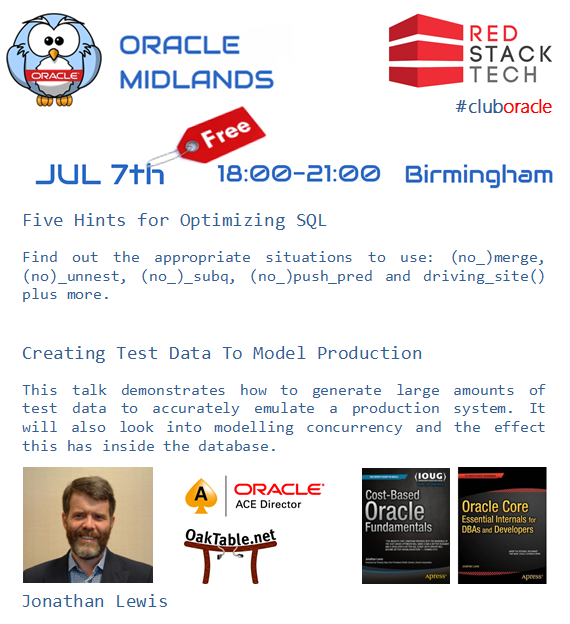 The title of this post is taken from tweet I saw a few weeks ago and it keeps coming back to haunt me, so I thought I would comment on it.
The title of this post is taken from tweet I saw a few weeks ago and it keeps coming back to haunt me, so I thought I would comment on it.
Let me start by saying I don’t have any context as to why the tweeter thought people were showing Azure so much love. From my perspective, I kind-of like Azure and I think it is what my employer will end up using, but I’m not a crazed fan-boy about it. 🙂
Also, I fully understand a move to the cloud is not the right thing for everyone, so this post is focused on those people who do want/need to move to the cloud. Just because it is not right for you, it doesn’t mean it’s not right for everyone. So when I’m talking about running services on the cloud, it is not a recommendation. I’m not telling you you’ve got to. I’m speaking about cloud services to try to explain why someone might say something like the title of this post. I’m hoping this paragraph will stem the hate-comments that invariably come when you mention the cloud. 🙂
Interface
The Azure interface it pretty neat. It’s clean and reasonably intuitive. I’m a casual user, so I can’t say how I would feel about it if I were managing hundreds or thousands of resources, but from my brief time with it, I like it.
I don’t dislike the AWS interface, but it does feel a bit more cluttered and ugly than the Azure interface. I guess that could be enough to put off some people maybe.
Services
Coming from the Oracle world, we tend to think of UNIX/Linux as being the centre of the universe, but if I think back to the companies I’ve worked for over the years, the majority of their kit has been Windows-based, with the exception of the bits I work on. 🙂 Since most corporate desktops are still Windows-based, Outlook, Office and Active Directory tend to rule the roost. If you are thinking of moving those services on to the cloud, Azure seems the “obvious choice”. Am I saying they are the best products and Azure is the best place to run them? No. What I’m saying is it will be seen as the “obvious choice” for many people wanting to move to the cloud.
The same goes with SQL Server. I happen to like the AWS RDS for SQL Server implementation, but I’m guessing a lot of SQL Server folks will get a warmer and fuzzier feeling about running SQL Server on Azure. Lots of decisions in IT are based on gut instinct or personal bias of the buyers, not necessarily fact. I can see how someone will “feel happier” there.
Once the Oracle Cloud becomes generally available, we may see a similar issue there. People may feel happier about running Oracle products on the Oracle Cloud than on AWS or Azure. Time will tell.
What’s under the hood?
This is where cloud really turns stuff on its head. If I want to run a Linux VM, I can do that on AWS, Azure, Oracle Cloud, VMware vCloud Air etc. From my perspective, if the VM stays up and gives me the performance I paid for, do I really care about what’s under the hood? You can be snobbish about hypervisors, but do I care if Oracle are using less hardware to service the same number of VMs as Azure? No. Where infrastructure as a service (IaaS) is concerned, it is all about the price:performance ratio. As I’ve heard many times, it’s a race for the bottom.
Call me naive, but I really don’t care what is happening under the hood of a cloud service, provided I get what I pay for. I think this is an important factor in how someone like Microsoft can go from zero to hero of the cloud world. If they provide the right services at the right price, people will come.
Conclusion
Q: Why do people show Azure so much love?
A: Because it does what it is meant to do. It provides the services certain companies want at a price they are willing to pay. What’s not to love?
Q: So it’s the best cloud provider right?
A: That depends on your judging criteria. No one cloud provider is “the best”. For some people Azure will be the best option. For others it might be the worst.
Cheers
Tim…
 I was looking for something in the New Features Manual and I had a total WTF moment when I saw this stuff.
I was looking for something in the New Features Manual and I had a total WTF moment when I saw this stuff. A little over a year ago I was at the
A little over a year ago I was at the  For a lot of people, encrypting database connections is probably not that big a deal. If your databases and application servers are sitting behind a firewall in a “safe” part of your network, then why bother?
For a lot of people, encrypting database connections is probably not that big a deal. If your databases and application servers are sitting behind a firewall in a “safe” part of your network, then why bother?
 I’ve just bought myself a
I’ve just bought myself a  I got some feedback from the Oracle documentation team, based on my
I got some feedback from the Oracle documentation team, based on my  After my recent rants about Oracle changing URLs and breaking stuff, I’ve actually done some changes myself. 🙂
After my recent rants about Oracle changing URLs and breaking stuff, I’ve actually done some changes myself. 🙂